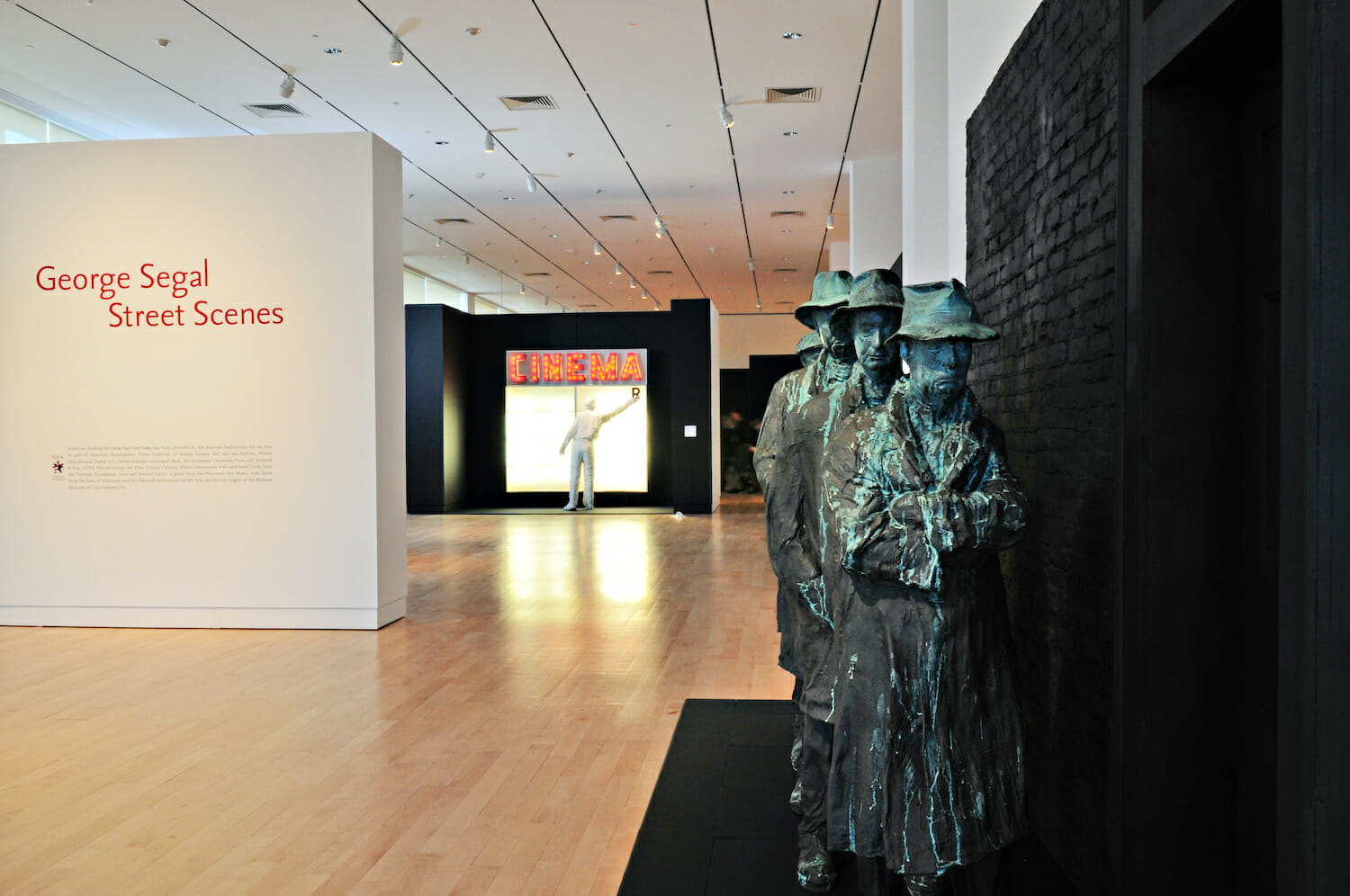
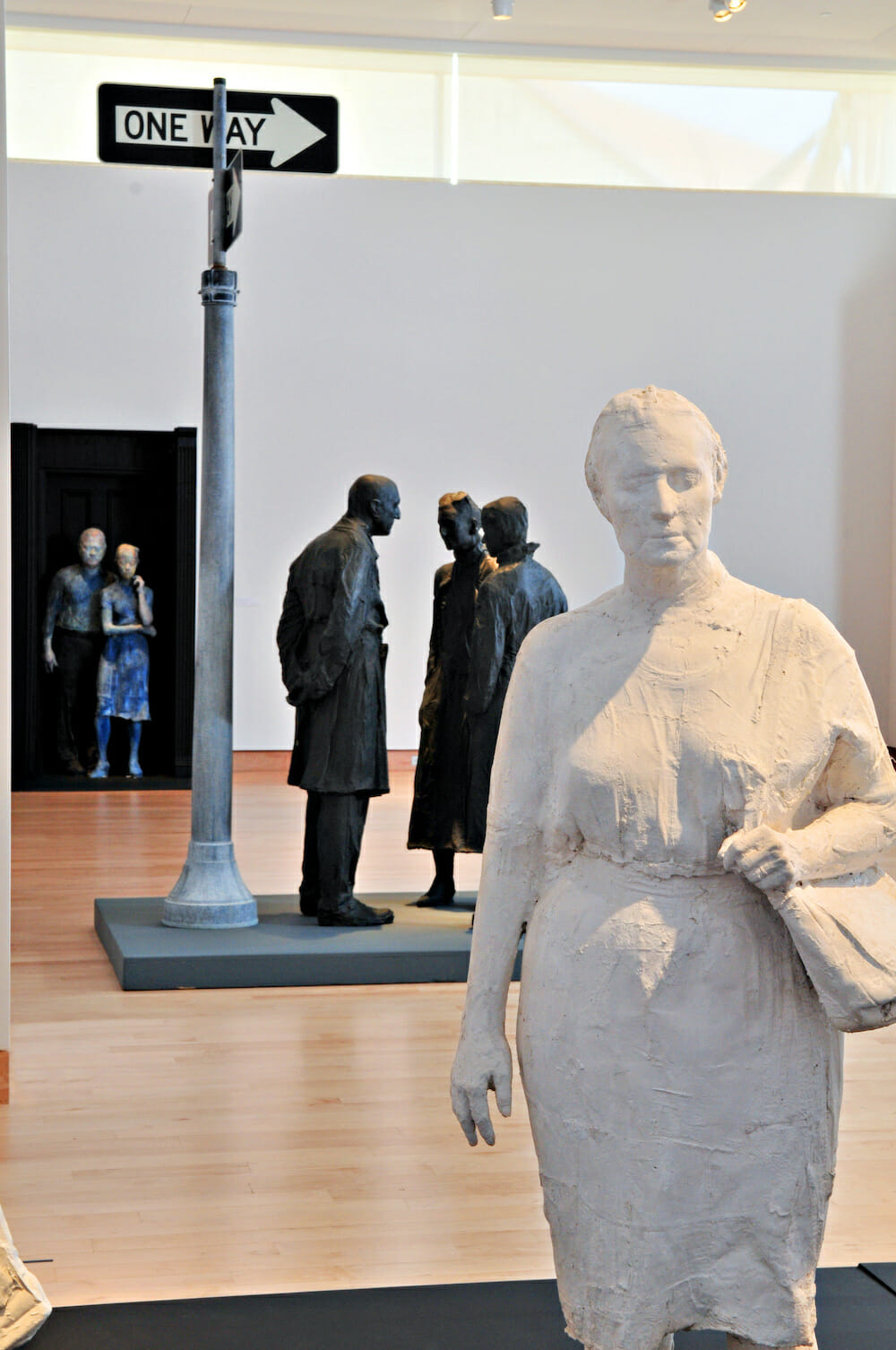
Overview
The Madison Museum of Contemporary Art (MMoCA) presents an exhibition of sculpture by the late American artist George Segal in the Museum’s Main Galleries. The exhibition, organized by MMoCA Director Stephen Fleischman and Curator of Exhibitions Jane Simon, will feature sixteen sculptural works from the 1960s to the late 1990s focusing on the urban environment.
George Segal: Street Scenes is the first exhibition to focus specifically on the artist’s exploration of the urban environment. Although Segal spent much of his adult life in rural New Jersey; he was born and raised in New York City, and his interaction with that city and his ability to observe and capture the urban sphere were central to his art practice.
After premiering in Madison, George Segal: Street Scenes will travel to the Nasher Sculpture Center, Dallas, Texas (January 24–April 5, 2009); The Nelson-Atkins Museum of Art, Kansas City, Missouri (May 9–August 2, 2009); and the Norton Museum of Art, West Palm Beach, Florida (September 8–December 6, 2009).
Exhibition in Detail
Many of the works in George Segal: Street Scenes portray men and women, young and old, sitting, walking, and talking. In addition, the works address commonplace aspects of the city―from cinema marquees to parking garages, diners, and buses. Starting in the 1970s and continuing through the 1990s, Segal’s work explored the reality of urban decay throughout the twentieth century, with many works focusing specifically on Manhattan’s East Village. Individuals in his works were shown lying on the ground or over subway grates, sitting on stoops, and crossing in front of walls covered with punk graffiti. The plaster or bronze figures are contemplative, sometimes forlorn, and always realistic. As Curator Jane Simon states, “The exhibition reveals Segal’s fascination with the darker, seedier side of life.”
In 1991, Segal was commissioned to create a sculpture for the Franklin Delano Roosevelt Memorial in Washington, DC. He created Depression Bread Line, a 9 x 12 x 3 foot work, showing five men waiting in line against the backdrop of a brick wall. Always interested in presenting reality, Segal used the work to confront the economic devastation of the Great Depression while focusing on the human toll underlying the crisis. According to Friedman, Segal’s “urban vignettes are a latter-day equivalent of the gritty American reportage found in the early twentieth-century canvases of John Sloan, Robert Henri, and their fellow Ashcan school literalists.”
Thirteen photographs by Segal’s friend and assistant, Donald Lokuta, will accompany the show and provide insight into his working process.
A fully illustrated catalogue, featuring essays by MMoCA director Stephen Fleischman, Martin Friedman, and Jane Simon will be published by MMoCA in September.
About George Segal
George Segal (1924–2000) is considered one of the most important and influential American artists of the twentieth century. Although he initially focused his efforts on painting, his career took a turn in the early 1960s when he began using plaster to create life-size figures that he presented together with elements from everyday environments, such as chairs, benches, window frames, and other building fragments. With subjects and settings that addressed commonplace situations, human values, and the burdens of economic hardship, these signature works caught the attention of the public and were broadly acclaimed by art critics, curators, art historians, and other artists. Among the many honors Segal received during his lifetime were the International Lifetime Achievement Award for Sculpture (1992) and the National Medal of Honor (1999).
According to Martin Friedman, author and director emeritus of the Walker Art Center, “[Segal’s] perception of the world differed markedly from that of his Pop brethren, whose interests lay less in human interaction than in the magic of everyday objects…Though ordinary objects also made their way into Segal’s sculpture, the human form was his enduring focus.” Friedman was a close friend of the artist and acted as curator for an exhibition of Segal’s work at the Walker Art Center in 1978.
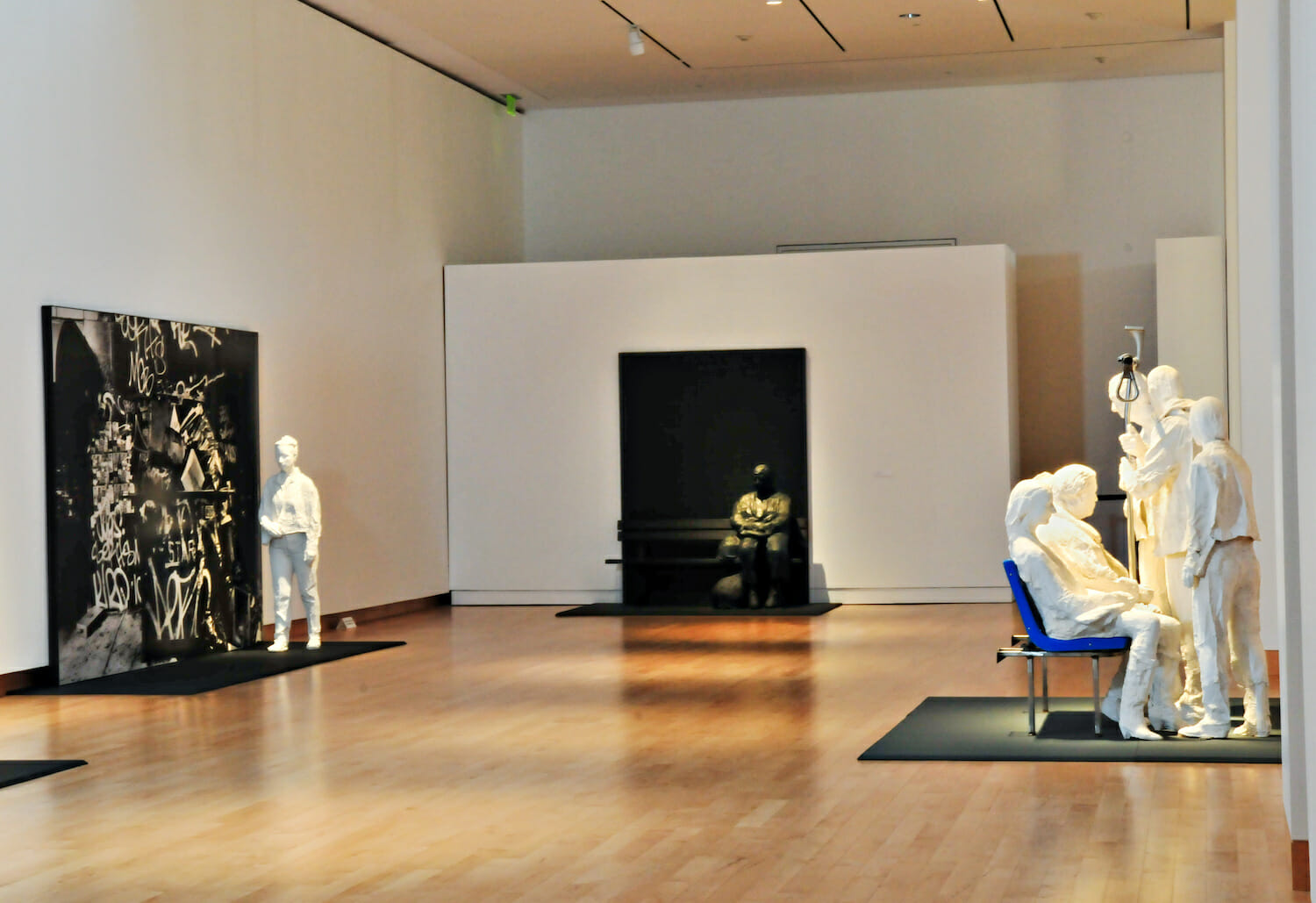
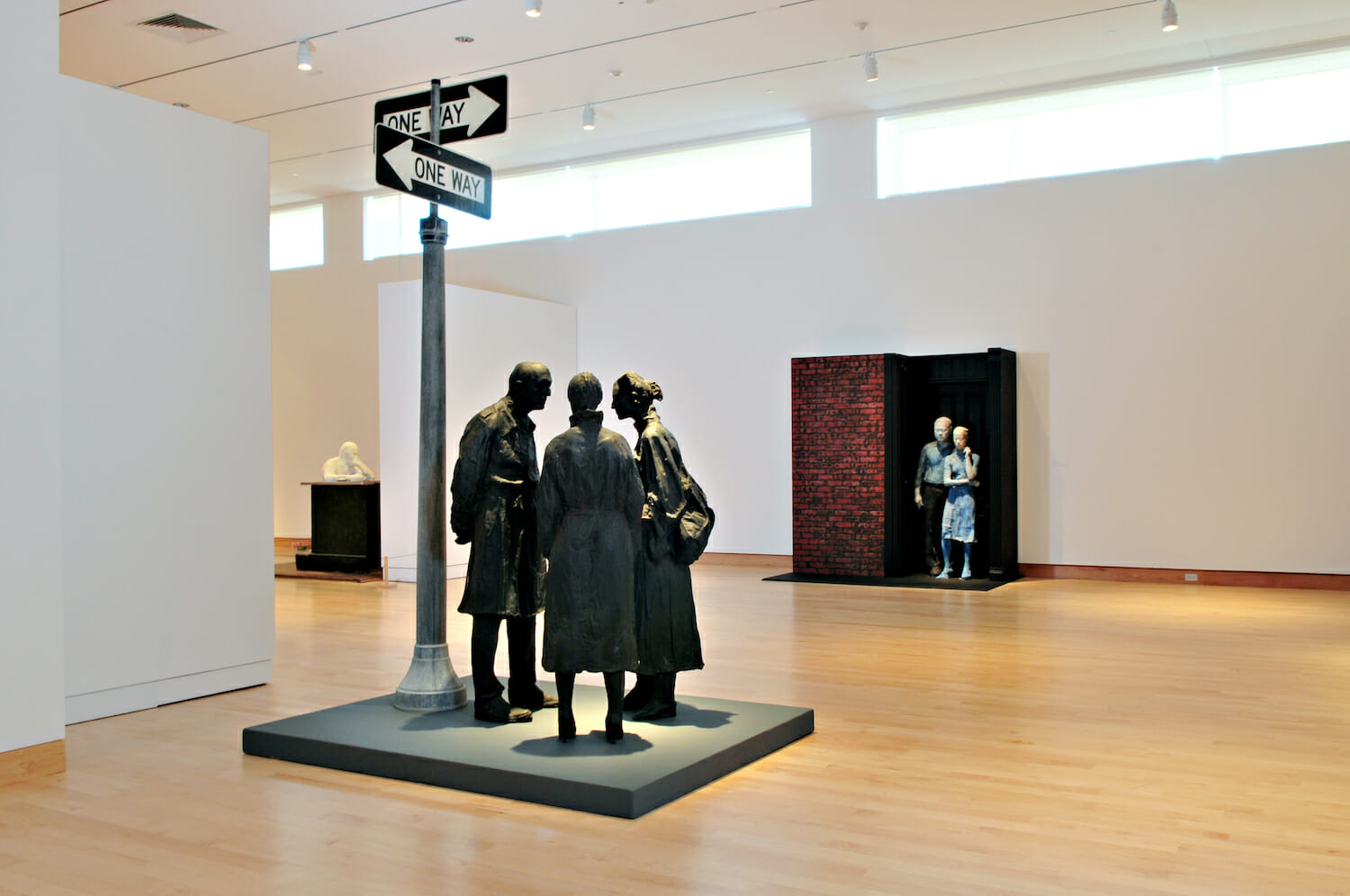

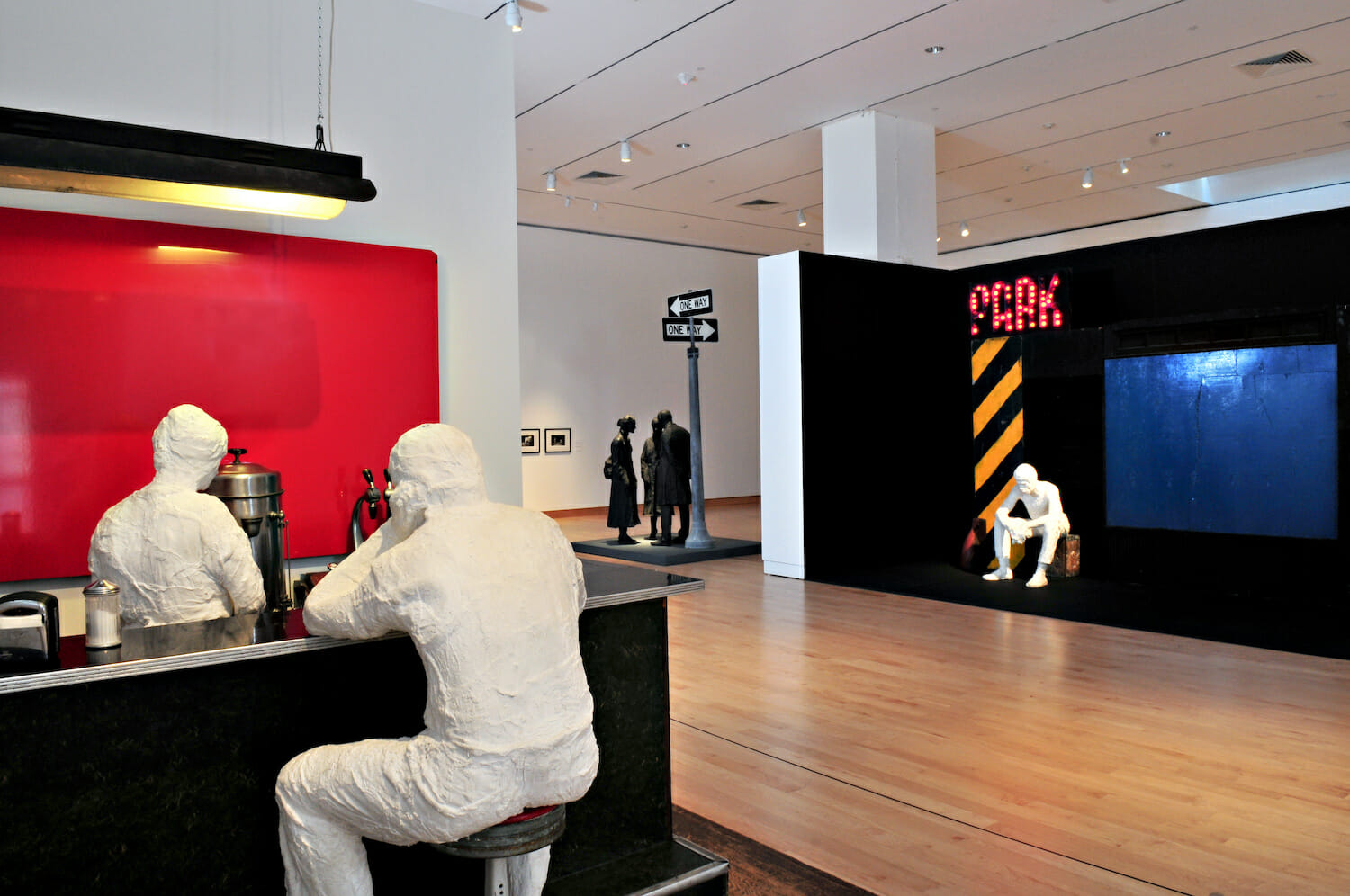
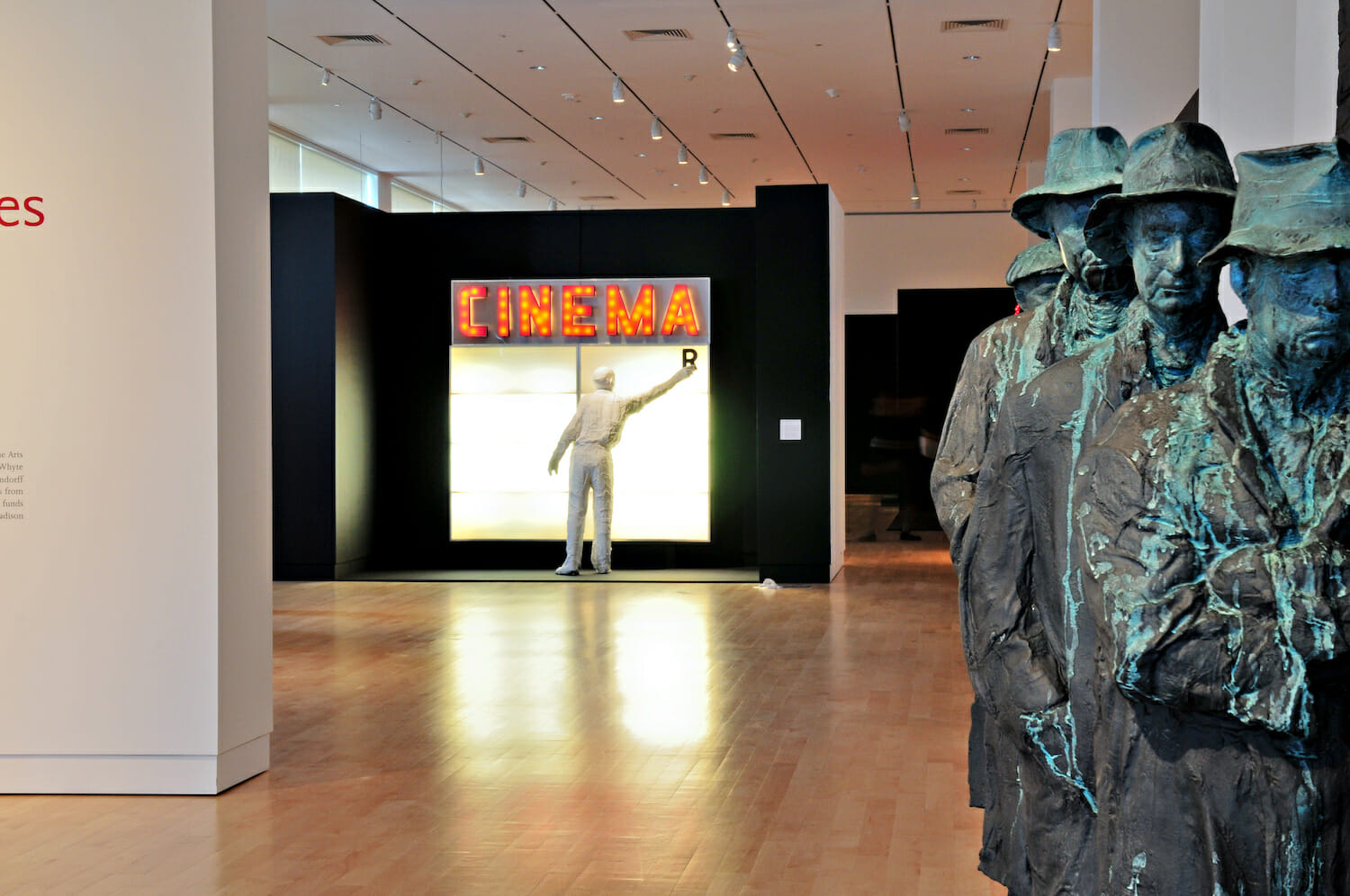

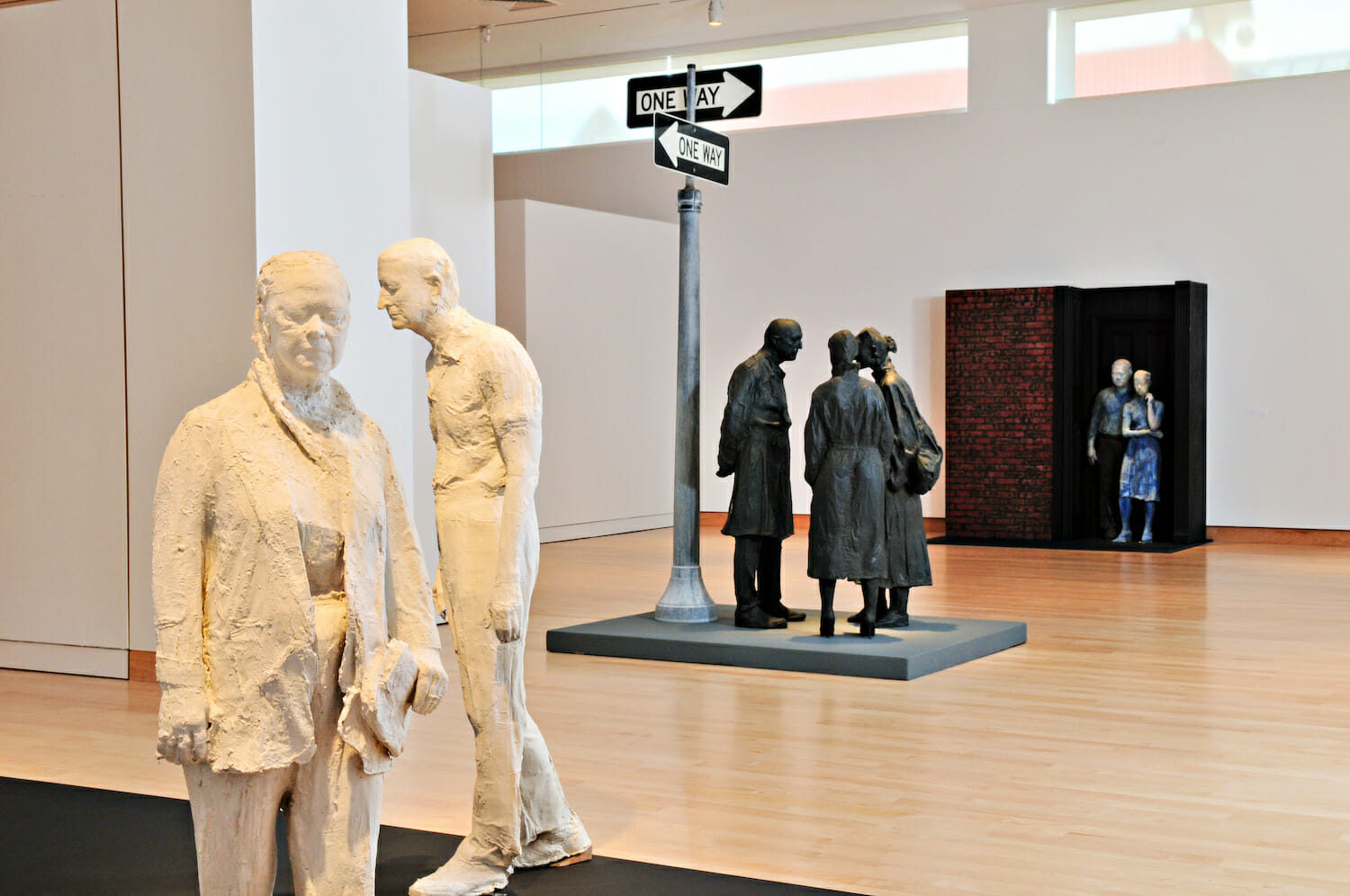
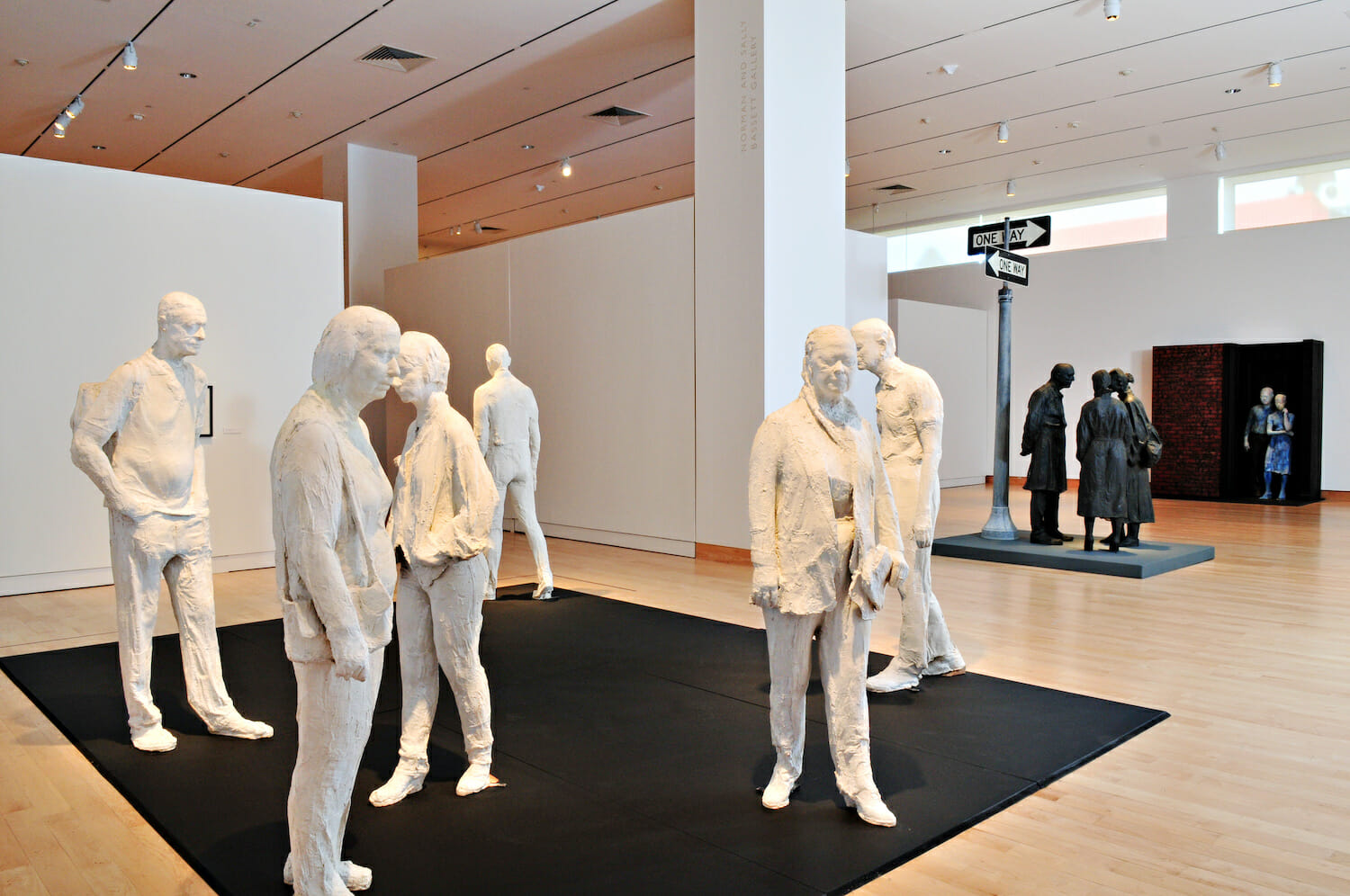

Exhibition Support
Generous funding for George Segal: Street Scenes has been provided by the National Endowment for the Arts as part of American Masterpieces: Three Centuries of Artistic Genius; Bill and Jan DeAtley; Whyte Hirschboeck Dudek S.C.; Daniel Erdman; Associated Bank; the Steinhauer Charitable Trust; J.H. Findorff & Son; CUNA Mutual Group; the Dane County Cultural Affairs Commission with additional funds from the Overture Foundation; Gina and Michael Carter; a grant from the Wisconsin Arts Board, with funds from the State of Wisconsin and the National Endowment for the Arts; and the Art League of the Madison Museum of Contemporary Art.
A casting of Depression Bread Line will become part of the permanent collection of the Madison Museum of Contemporary Art through an extraordinary gift from The George and Helen Segal Foundation, with funds for casting provided by Bill and Jan DeAtley, James and Sylvia Vaccaro, a major grant from the Madison Community Foundation, Jim and Cathie Burgess, the Pleasant T. Rowland Foundation, the Overture Foundation, and Tom and Martha Carter.